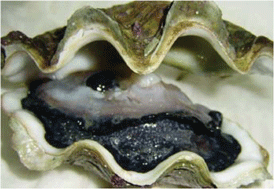Optimisation of an HPLC selected reaction monitoring electrospray tandem mass spectrometry method for the detection of 50 arsenic species†
Abstract
Selected reaction monitoring (SRM) electrospray tandem mass spectrometry online with HPLC is routinely applied for organic trace analysis, e.g. drug metabolites and pesticide residues. However, it has so far found only limited application for the characterisation of trace element species. This is of particular relevance for arsenic speciation analysis because the structural diversity of arsenic species requires high detection selectivity which cannot be achieved with the predominantly applied HPLC online with inductively coupled plasma mass spectrometry. For this reason we have studied the collision induced dissociation behaviour of 50 organoarsenic species to optimize the conditions for their detection using anion exchange HPLC online with electrospray triple quadrupole mass spectrometry operated in the SRM mode. The effect of quadrupole scan time on peak area reproducibility was studied for selected arsenic species. The possibility of “cross talk” occurring between subsequently monitored transitions was also investigated. For quality control purposes SRM transition ratios (peak area) were calculated from the two transitions monitored for each arsenic species (except for monomethylarsonic acid). Calibration experiments were performed for four arsenic species using three different mass spectrometric scanning methods: first a method monitoring all 50 species (99 SRM transitions) in rapid sequence throughout the chromatographic run (non-segmented), second a two-segment method monitoring all species, 32 species in the first time segment and 18 in the second time segment, and third a four-segment method monitoring only one species per time segment. Linear regression parameters and limits of detection were not significantly different for the three methods. Finally, the non-segmented method was applied for the identification of arsenic species in a Tridacna (giant clam) kidney extract. In addition, arsenic species were characterised in the kidney extract following reaction with hydrogen sulfide or after methylation.


 Please wait while we load your content...
Please wait while we load your content...